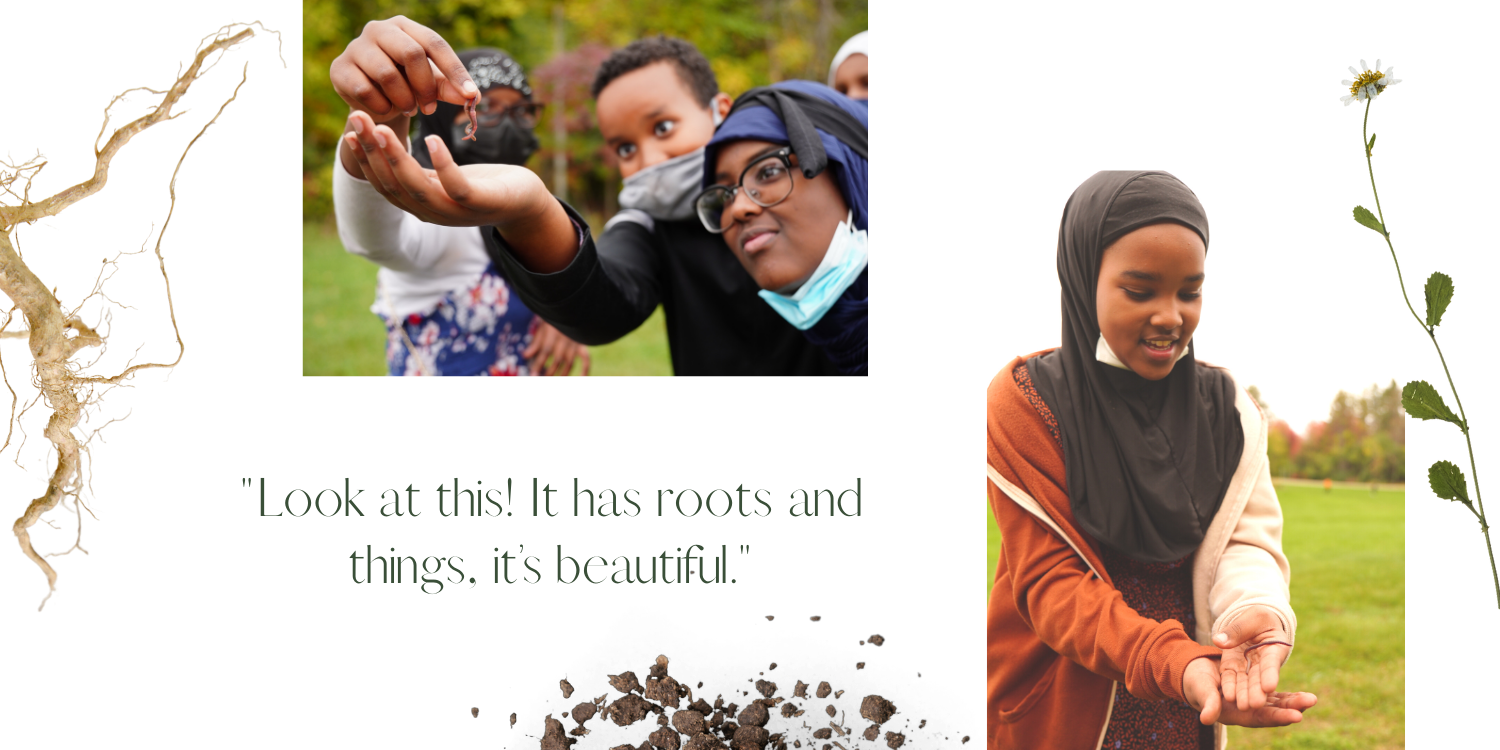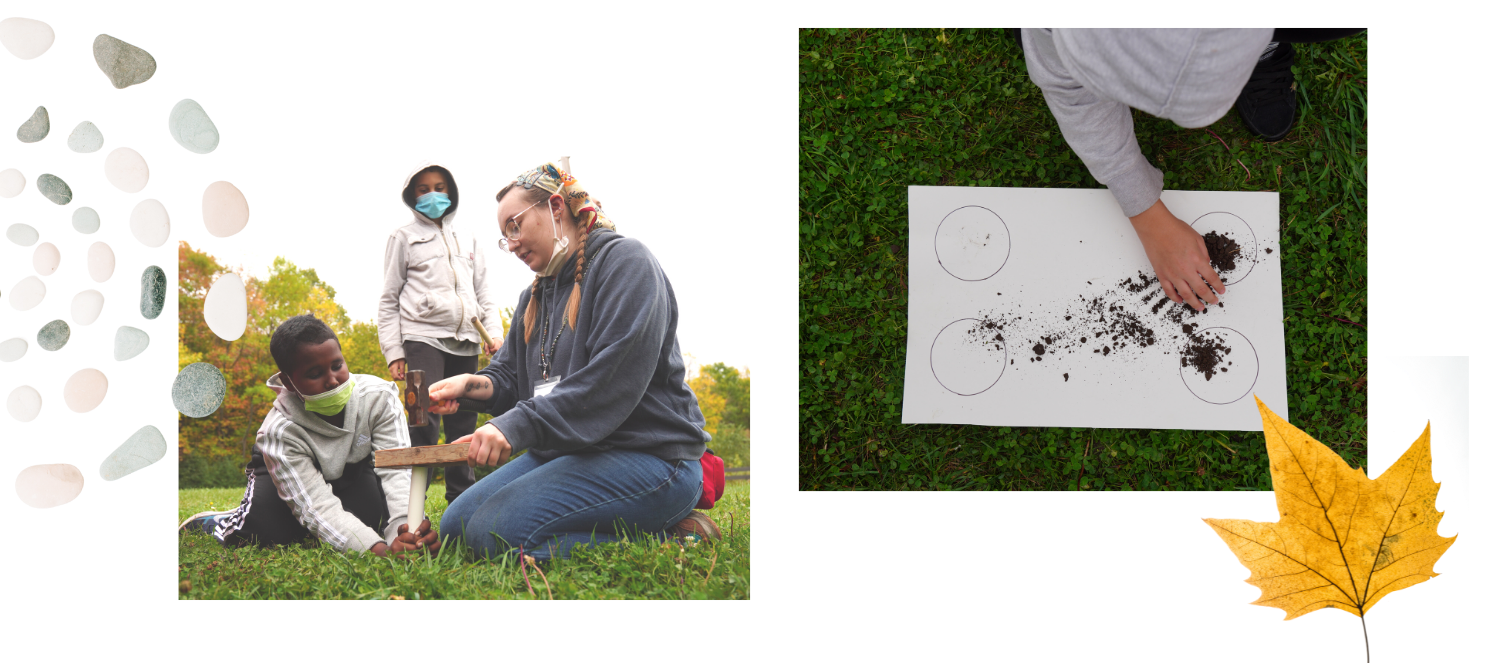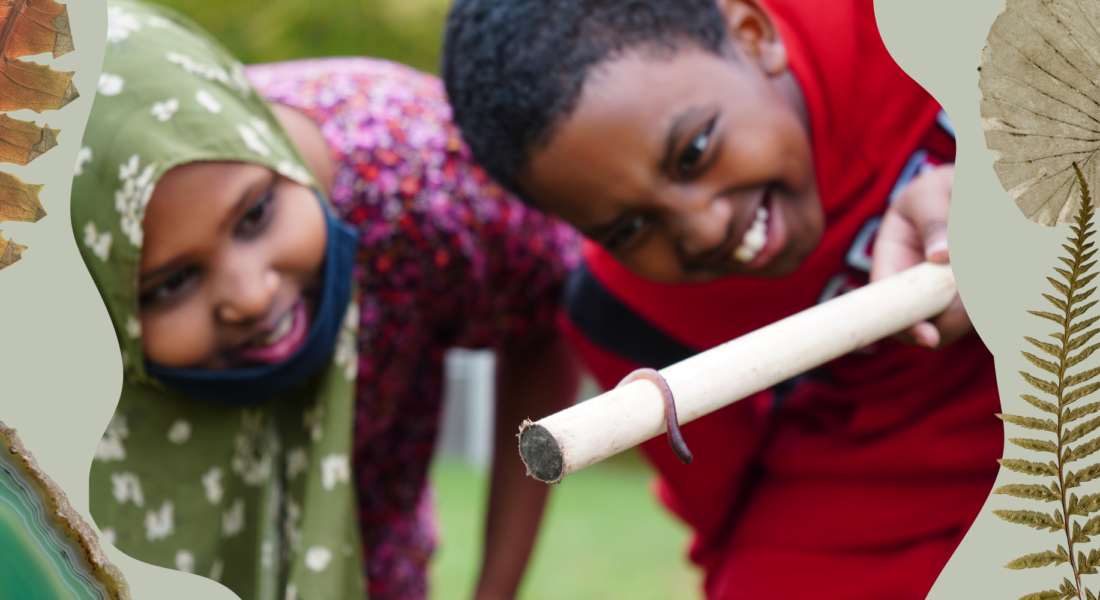Sixth graders from the Twin Cities International School trail out of the nature center supplied with PVC pipes, wooden dowls, a block to stabilize their sampler, and hammers (wielded by adults or with strict supervision). They’re off to collect soil samples from the Front 40 acres at Tanadoona and discover more about geology and earth science.
Each group identifies an area they’d like to sample and get to work. Students take turns holding the pipe in place, while an adult or a student with help from an adult uses the hammer to drive the pipe into the ground.
“Are we going to hit the bedrock?” one student asks.
Students spent the morning learning about the different layers of soil and hope to be able to observe different layers in their soil samples. It’s unlikely they’ll hit any bedrock far below the ground’s surface, but they will be able to examine topsoil, sub-soil, and the organisms that dwell there.
Geologists in training
Getting the sample out of the tube is easier said than done. Students work together to push the dirt out using their wooden dowl. They encourage each other, even when the task becomes frustrating.
“It’s okay to take your time. Take a breath,” one student tells his group mates. These are wise words from an 11-year-old.
Once their sample is free it’s time to examine their findings. Equipped with popsicle sticks, students dig, poke, and divide their sample into different categories. Rocks, roots, plants, and different colors of dirt begin to reveal themselves. The most coveted finding of all—earth worms.

“I’m not afraid of it” Zaitun, a student at the school says, and puts the worm in the palm of her hand. She carries it around for a while, before gently depositing it back into the hole it came from.
Taking soil samples is one way our environmental education programs encourage youth to discover more about geology. Lessons are customized to your grade’s learning level, and activities include taking soil samples, exploring geological maps, identifying different rock types, and introducing students to fossils and paleontology.
Young people participating in geology lessons at Camp Fire meet SEL (social-emotional learning) and STEM competencies by asking questions to examine an interpretation about the relative ages of different rock layers. They examine rock layers by focusing on the interpretation of rock layers using geologic principles like superposition and cross-cutting relationships.
Getting hands dirty
Once the other students see Zaitun bravely handling a worm, they’re all excited to find one for themselves. Students who at first tentatively sorted their samples using popsicle sticks and twigs, are ready to get their hands dirty—literally.
“Look at this! It has roots and things, it’s beautiful,” one student shares. He’s cradling a plant in his hand that is still attached to the topsoil from his group’s sample.
This is the first field trip of the year for students from the Twin Cities International School, and their educators emphasize how excited students are just to be outside.
“It’s a hard transition from distance learning,” said Jen Pare, Assistant Director of Teaching & Learning. “We really wanted students to spend time outdoors.”

At the end of their day with Camp Fire, students reflect on some of their favorite parts of the field trip. Some choose other activities like fort building, survival skills, and learning about animals and their adaptations. Many students enthusiastically respond that taking soil samples was the best part.
“I liked learning about the soil samples, I got to use the hammer. It was so cool,” shared Hamza.
“Can we take another soil sample?” another student asks as they file towards their bus.
There might not be time for another sample today, but it’s clear some of these students have discovered a love for the earth, and all the crawly, growing things that live in it.
